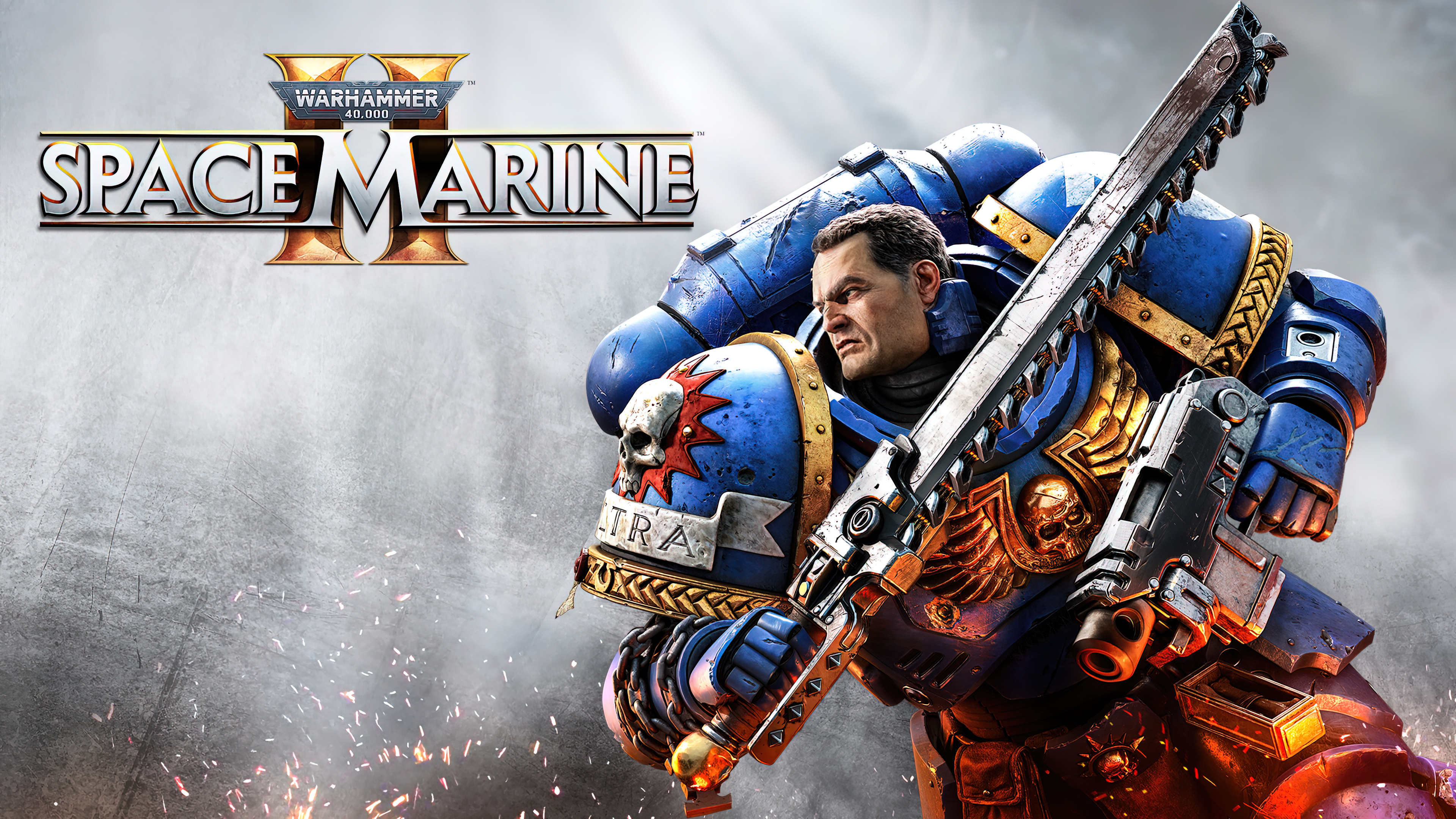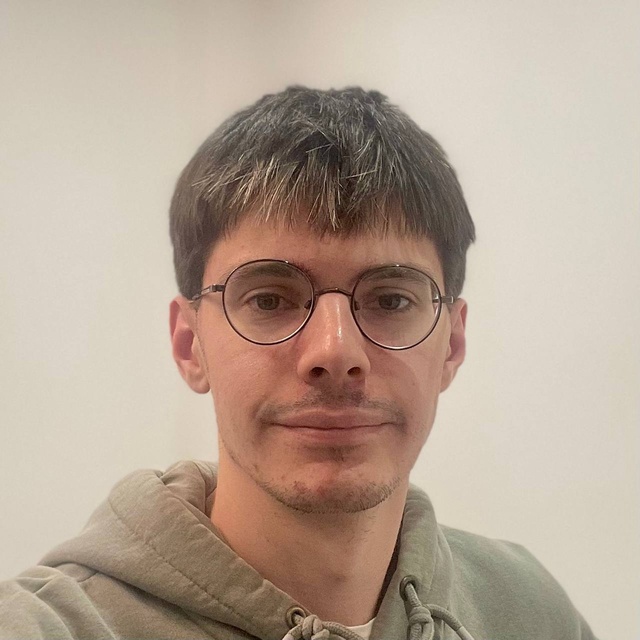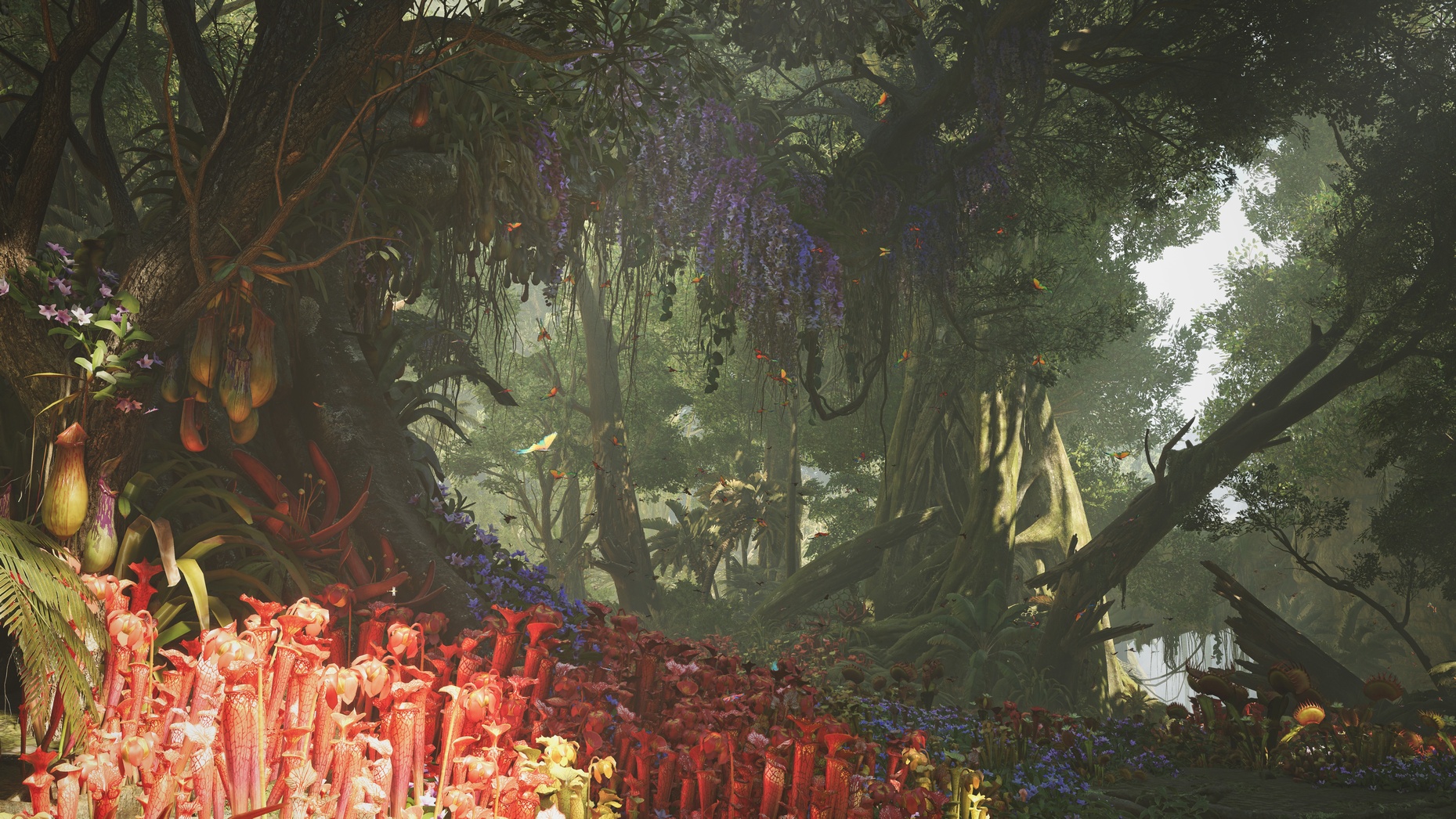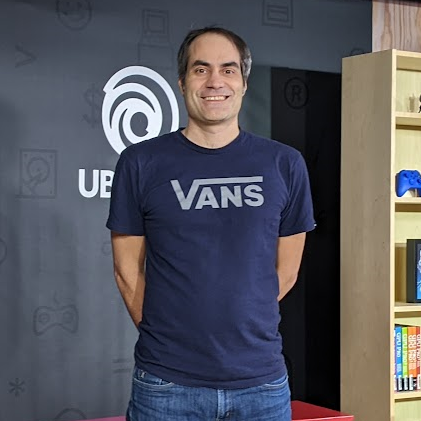The Talks:
Geometry rendering and shaders infrastructure in Warhammer 40000: Space Marine 2.

Warhammer 40000: Space Marine 2 is based on Swarm Engine, a proprietary in-house engine from Saber being developed for decades. This engine has already proven itself in tasks of simulating and rendering a large number of distinct and interactive entities. The sequel to the Space Marine franchise aims to depict a war of galactic proportions. It introduces new challenges for developers. This talk provides details of how we addressed some of these challenges. It shows what decisions were made and why, what were the limitations, and what lessons were learned.
The first part of the talk covers the geometry rendering pipeline of the engine, data structures and systems used to manage and process instances related data. The game demands a sophisticated geometry engine due to its features, such monumental geometrically dense architecture of game locations, procedurally generated vegetation, scattered debris, and an even greater number of interactive entities in different game scenarios. However, it is important to keep in mind not only the performance, but also the overall organization and consistency of the systems, which is crucial for the implementation of future optimizations and features.
The second part of the talk dives into the shader infrastructure used for the engine, focusing on how we tackled the combinatorial explosion of uber shader permutations. Modern AAA games demand highly dynamic and visually rich rendering pipelines, often relying on uber shaders to manage complex material and lighting variations. The Space Marine sequel is not an exception here. However, as permutations grow, maintaining scalability and performance becomes a critical challenge.
Media:
PDF (6mb).
PPTX (56mb).
Youtube.
Speakers:
 Max Bukhalov
Max Bukhalov is a graphics programmer at Saber Interactive working in the game industry for over 5 years. He helped to ship such games as World War Z, Halo: The Master Chief Collection and Warhammer 40000: Space Marine. At the moment Max is working on Roadcraft and upcoming Toxic Commando and Jurassic Park: Survival.
 Egor Orachev
Egor Orachev is a graphics programmer at Saber Interactive working on rendering technology for the in-house Swarm Engine for four years now. He has been involved in the development of such games as Warhammer 40000: Space Marine 2, Roadcraft, as well as the upcoming Toxic Commando and Jurassic Park: Survival. Egor's main areas of interest include topics such as GPU-driven rendering, programmable materials and shaders, data-driven game simulations, rendering tech tooling, development workflows improvements, modular and reliable game engine architecture.
RE ENGINE Meshlet Rendering Pipeline.

This presentation explains the meshlet rendering pipeline introduced in Dragon’s Dogma 2 and Monster Hunter Wilds. These game titles required the depiction of vast environments and dynamic changes over time. During development, we found that using conventional bindless rendering alone made it difficult to draw complex geometry with stable execution times. To address these challenges, we implemented a rendering feature utilizing meshlets. We will not only provide a detailed explanation behind the adoption of this technology, but also present the results of our implementation. We will also discuss the differences between DD2 that uses the early meshlet implementation and MHW that uses the current implementation. Furthermore, we would share some optimization in our implementation and its results.
Media:
PDF (6mb).
PPTX (291mb).
PDF (Q&A) (1mb).
Youtube.
Speaker:
 Hitoshi Mishima
Hitoshi Mishima is a rendering engineer at Capcom. He joined Capcom in 2008 after completing his master's degree in information engineering at Meijo University. He has been involved in the development of MT Framework 2.0, Panta Rhei, and RE ENGINE, and has been active as a rendering engineer for 17 years. Mishima is in charge of the design, development, and implementation of rendering functions, and is involved in a wide range of work, from the implementation of each API to the development of the infrastructure required for rendering. His fields of work include shader compilation, texture conversion, data compression, lighting (shading, probe, ray tracing, shadow mapping), post-processing, occlusion culling, and memory management.
Evolving Global Illumination in Overwatch 2.

Global illumination (GI) for any modern game is a tricky, complex, and nuanced topic. No matter the approach, there are numerous tradeoffs in terms of quality, performance, and workflow. This talk aims to cover the Overwatch team's journey to update the GI solution that has served us for almost a decade into a more modern approach that provides a smoother, faster workflow for our artists, while maintaining the overall visual quality and performance our players have come to expect from our game. We will discuss where we started, where we currently are on our journey, and what's left on the road ahead. Also covered will be the tradeoffs and challenges we have encountered along the way, including how we worked through them to ensure a solid experience across our incredibly broad range of supported hardware.
Media:
PDF (5mb).
PPTX (131mb).
Youtube.
Speaker:
 Will Pearce
Will Pearce is a Senior Software Engineer II at Blizzard Entertainment. He has been with Blizzard on the Overwatch team since 2020 and has over 16 years of experience as a software engineer. Will has spent his time at Blizzard building and improving rendering features for Overwatch and Overwatch 2, including surface deformation, volumetric effects, new BRDFs, temporal super-resolution, and global illumination, while also supporting a live service game.
Anvil Rendering Architecture.

In this talk, we’ll present Anvil’s evolution into a centralized engine within a monorepo, powering multiple productions in a unified codebase. This structure introduces technical and organizational challenges, including modularization, shader complexity, and code divergence. We’ll explore Anvil’s rendering architecture, focusing on its GPU-driven mesh pipeline, frame graph, and shader binding. Performance optimization strategies, profiling tools, and our data-driven tuning approach via the “Platform Manager” will be detailed. We’ll also cover our insourced development of Fusion and share insights from shipping Assassin’s Creed Shadows in this ecosystem. The session includes code samples, and in-depth looks at key systems.
Media:
PDF (10mb).
PPTX (218mb).
Youtube.
Speakers:
 Nicolas Lopez
Nicolas Lopez is a Rendering Technical Architect on the Assassin's Creed brand and the Anvil Engine at Ubisoft Montreal. He has a passion for game engine architecture, global illumination and large scale rendering. He has contributed to several AAA titles such as Neverdead, Star Wars Battlefront 2 and Assassin's Creed Shadows. He's also contributed to various high profile engines such as Frostbite and Anvil.
 Michel Bouchard
Michel Bouchard is a Technical Architect working at Ubisoft since 2006. He has contributed to graphics technology on different franchises, notably Rainbow Siege, Watch Dogs, Far Cry and Assassin's Creed. Those experiences helped him shape the architecture foundation of Anvil's rendering pipeline. His main point of focus is to build and share tech that does have a significant impact on game quality.
Pushing 60hz. Shipping Indiana Jones and The Great Circle.

In this talk, we will present how we shipped Indiana Jones: The Great Circle as a 60Hz title. First, we will go over the development mentality set up by the team and studio from the start so that we would be confident that actually shipping at 60Hz would be feasible. Next, we will go over the fundamentals of how a frame is rendered in the game. Finally we will go over how we worked during the shipping phase and what was done to reach the set target.
Media:
PDF (5mb).
PPTX (98mb).
Youtube.
Speakers:
 Joel de Vahl
Joel de Vahl is a Senior Render Programmer at MachineGames. He worked on the shadow system as well as general rendering performance optimizations for Indiana Jones: The Great Circle. Before joining MachineGames he worked at Unity where he contributed to Entities Graphics among other things.
Dragon Age: The Veilguard - GI, RT, Character Creator and other systems.

We present the architectural challenges & decisions related to global illumination, ray tracing and character creator for the latest installment of the
Dragon Age series - Dragon Age: The Veilguard. First, we will cover the challenges around our probe baking system and decisions made around the
team size and asset constraints. Next, we will share implementation choices taken for ray tracing considering the limitations of already existing ray tracing
tech, with the additional requirement of supporting more GPUs. Lastly, we will go over our character creator tool, decisions on the technical side as well as
some practical technical details making this technology fulfill the game’s requirements.
Media:
PDF (9mb).
PPTX (100mb).
Youtube.
Speakers:
 Navjot Garg
Navjot Garg is currently working as Associate Technical Director at BioWare. He served as Rendering Lead for Dragon Age : The Veilguard leading a team of graphics programmers to ship the game on Frostbite engine. As a part of this, he worked on character creation tool, strand hair, GI, performance and bundling optimizations for the game on PC and consoles. Before joining BioWare, he worked at Firaxis Games and helped ship Civilization 6 as a graphics programmer. His interest is in areas of shader development, character rendering and physically based rendering.
 Kleber Garcia
Kleber Garcia is a Graphics Engineer from Electronic Arts working in the Frostbite Engine. His previous work involved global illumination solutions, shadow systems, post process systems, GPU driven technologies and supporting the graphics stack of many games such as Battlefield, Football Club, Plant vs Zombies, Madden NFL, Anthem and many others. He’s very passionate about game engine technologies and is excited to present at REAC!
 Darrin Stewart
Darrin Stewart is a Graphics Engineer on the Frostbite Engine team at Electronic Arts. Prior to joining the Frostbite team, Darrin spent many years with BioWare, working on both the Dragon Age and Mass Effect franchises, as well as Anthem and Star Wars: The Old Republic. As a BioWare engineer, his work touched many different areas of graphics, including lighting, post effects, VFX, character creation, performance optimizations, and more. During Dragon Age: The Veilguard development, Darrin transitioned to the Frostbite team, where he now focuses on ray tracing.

 Max Bukhalov is a graphics programmer at Saber Interactive working in the game industry for over 5 years. He helped to ship such games as World War Z, Halo: The Master Chief Collection and Warhammer 40000: Space Marine. At the moment Max is working on Roadcraft and upcoming Toxic Commando and Jurassic Park: Survival.
Max Bukhalov is a graphics programmer at Saber Interactive working in the game industry for over 5 years. He helped to ship such games as World War Z, Halo: The Master Chief Collection and Warhammer 40000: Space Marine. At the moment Max is working on Roadcraft and upcoming Toxic Commando and Jurassic Park: Survival.
 Egor Orachev is a graphics programmer at Saber Interactive working on rendering technology for the in-house Swarm Engine for four years now. He has been involved in the development of such games as Warhammer 40000: Space Marine 2, Roadcraft, as well as the upcoming Toxic Commando and Jurassic Park: Survival. Egor's main areas of interest include topics such as GPU-driven rendering, programmable materials and shaders, data-driven game simulations, rendering tech tooling, development workflows improvements, modular and reliable game engine architecture.
Egor Orachev is a graphics programmer at Saber Interactive working on rendering technology for the in-house Swarm Engine for four years now. He has been involved in the development of such games as Warhammer 40000: Space Marine 2, Roadcraft, as well as the upcoming Toxic Commando and Jurassic Park: Survival. Egor's main areas of interest include topics such as GPU-driven rendering, programmable materials and shaders, data-driven game simulations, rendering tech tooling, development workflows improvements, modular and reliable game engine architecture.

 Hitoshi Mishima is a rendering engineer at Capcom. He joined Capcom in 2008 after completing his master's degree in information engineering at Meijo University. He has been involved in the development of MT Framework 2.0, Panta Rhei, and RE ENGINE, and has been active as a rendering engineer for 17 years. Mishima is in charge of the design, development, and implementation of rendering functions, and is involved in a wide range of work, from the implementation of each API to the development of the infrastructure required for rendering. His fields of work include shader compilation, texture conversion, data compression, lighting (shading, probe, ray tracing, shadow mapping), post-processing, occlusion culling, and memory management.
Hitoshi Mishima is a rendering engineer at Capcom. He joined Capcom in 2008 after completing his master's degree in information engineering at Meijo University. He has been involved in the development of MT Framework 2.0, Panta Rhei, and RE ENGINE, and has been active as a rendering engineer for 17 years. Mishima is in charge of the design, development, and implementation of rendering functions, and is involved in a wide range of work, from the implementation of each API to the development of the infrastructure required for rendering. His fields of work include shader compilation, texture conversion, data compression, lighting (shading, probe, ray tracing, shadow mapping), post-processing, occlusion culling, and memory management.

 Will Pearce is a Senior Software Engineer II at Blizzard Entertainment. He has been with Blizzard on the Overwatch team since 2020 and has over 16 years of experience as a software engineer. Will has spent his time at Blizzard building and improving rendering features for Overwatch and Overwatch 2, including surface deformation, volumetric effects, new BRDFs, temporal super-resolution, and global illumination, while also supporting a live service game.
Will Pearce is a Senior Software Engineer II at Blizzard Entertainment. He has been with Blizzard on the Overwatch team since 2020 and has over 16 years of experience as a software engineer. Will has spent his time at Blizzard building and improving rendering features for Overwatch and Overwatch 2, including surface deformation, volumetric effects, new BRDFs, temporal super-resolution, and global illumination, while also supporting a live service game.

 Nicolas Lopez is a Rendering Technical Architect on the Assassin's Creed brand and the Anvil Engine at Ubisoft Montreal. He has a passion for game engine architecture, global illumination and large scale rendering. He has contributed to several AAA titles such as Neverdead, Star Wars Battlefront 2 and Assassin's Creed Shadows. He's also contributed to various high profile engines such as Frostbite and Anvil.
Nicolas Lopez is a Rendering Technical Architect on the Assassin's Creed brand and the Anvil Engine at Ubisoft Montreal. He has a passion for game engine architecture, global illumination and large scale rendering. He has contributed to several AAA titles such as Neverdead, Star Wars Battlefront 2 and Assassin's Creed Shadows. He's also contributed to various high profile engines such as Frostbite and Anvil.
 Michel Bouchard is a Technical Architect working at Ubisoft since 2006. He has contributed to graphics technology on different franchises, notably Rainbow Siege, Watch Dogs, Far Cry and Assassin's Creed. Those experiences helped him shape the architecture foundation of Anvil's rendering pipeline. His main point of focus is to build and share tech that does have a significant impact on game quality.
Michel Bouchard is a Technical Architect working at Ubisoft since 2006. He has contributed to graphics technology on different franchises, notably Rainbow Siege, Watch Dogs, Far Cry and Assassin's Creed. Those experiences helped him shape the architecture foundation of Anvil's rendering pipeline. His main point of focus is to build and share tech that does have a significant impact on game quality.

 Joel de Vahl is a Senior Render Programmer at MachineGames. He worked on the shadow system as well as general rendering performance optimizations for Indiana Jones: The Great Circle. Before joining MachineGames he worked at Unity where he contributed to Entities Graphics among other things.
Joel de Vahl is a Senior Render Programmer at MachineGames. He worked on the shadow system as well as general rendering performance optimizations for Indiana Jones: The Great Circle. Before joining MachineGames he worked at Unity where he contributed to Entities Graphics among other things.

 Navjot Garg is currently working as Associate Technical Director at BioWare. He served as Rendering Lead for Dragon Age : The Veilguard leading a team of graphics programmers to ship the game on Frostbite engine. As a part of this, he worked on character creation tool, strand hair, GI, performance and bundling optimizations for the game on PC and consoles. Before joining BioWare, he worked at Firaxis Games and helped ship Civilization 6 as a graphics programmer. His interest is in areas of shader development, character rendering and physically based rendering.
Navjot Garg is currently working as Associate Technical Director at BioWare. He served as Rendering Lead for Dragon Age : The Veilguard leading a team of graphics programmers to ship the game on Frostbite engine. As a part of this, he worked on character creation tool, strand hair, GI, performance and bundling optimizations for the game on PC and consoles. Before joining BioWare, he worked at Firaxis Games and helped ship Civilization 6 as a graphics programmer. His interest is in areas of shader development, character rendering and physically based rendering.
 Kleber Garcia is a Graphics Engineer from Electronic Arts working in the Frostbite Engine. His previous work involved global illumination solutions, shadow systems, post process systems, GPU driven technologies and supporting the graphics stack of many games such as Battlefield, Football Club, Plant vs Zombies, Madden NFL, Anthem and many others. He’s very passionate about game engine technologies and is excited to present at REAC!
Kleber Garcia is a Graphics Engineer from Electronic Arts working in the Frostbite Engine. His previous work involved global illumination solutions, shadow systems, post process systems, GPU driven technologies and supporting the graphics stack of many games such as Battlefield, Football Club, Plant vs Zombies, Madden NFL, Anthem and many others. He’s very passionate about game engine technologies and is excited to present at REAC!
 Darrin Stewart is a Graphics Engineer on the Frostbite Engine team at Electronic Arts. Prior to joining the Frostbite team, Darrin spent many years with BioWare, working on both the Dragon Age and Mass Effect franchises, as well as Anthem and Star Wars: The Old Republic. As a BioWare engineer, his work touched many different areas of graphics, including lighting, post effects, VFX, character creation, performance optimizations, and more. During Dragon Age: The Veilguard development, Darrin transitioned to the Frostbite team, where he now focuses on ray tracing.
Darrin Stewart is a Graphics Engineer on the Frostbite Engine team at Electronic Arts. Prior to joining the Frostbite team, Darrin spent many years with BioWare, working on both the Dragon Age and Mass Effect franchises, as well as Anthem and Star Wars: The Old Republic. As a BioWare engineer, his work touched many different areas of graphics, including lighting, post effects, VFX, character creation, performance optimizations, and more. During Dragon Age: The Veilguard development, Darrin transitioned to the Frostbite team, where he now focuses on ray tracing.